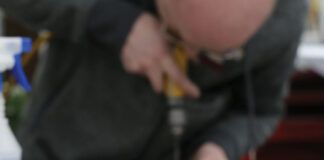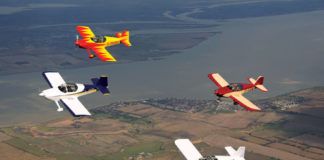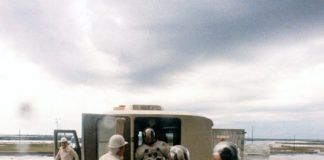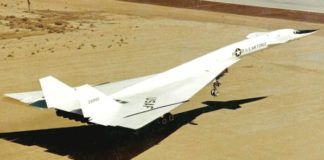
Belted’s Take
After reading “The State of Auto Conversions” article in the May issue of KITPLANES, I feel I must respond. Upon reading “Counterpoint” I have great concern with your comments. After more than 29 years of perfecting and flying auto engines we feel confident in our product.
We worked under the guidance of Dr. M.C. “Bill” Harrold, an aeronautical engineer at Lockheed, with over 50 years of experience in the aerospace field. His work involved rocket design, cooling of components, being co-inventor of Halon fire suppressant systems and numerous inventions. Our unit was analyzed for use with his numbers. We feel fortunate to have a truly engineered unit. As for the firewall-forward components, our unit has a radiator designed and built to Dr. Harrold’s specifications. The radiator we are using has the best cooling and least drag for its size. The engine mount is designed for 10 G, as are the baffling and firewall-forward components. Rights were purchased for the cowlings with the modified “glove” to clear engine components while retaining the stock look [for the RV series].
Our units can be used on a variety of aircraft, as the firewall forward is a matter of altering parts to fit a particular product. We currently have units being flown throughout the United States, Canada, Australia, Brazil and Germany.
You mention the safety of “aero” engines because they have dual spark plugs. The reason they have dual plugs is that they have a large flame front and to fire smoothly they must have dual plugs. To compare the BSFC of air-cooled engines to liquid-cooled engines with so little difference makes no sense. The [Rutan] Voyager could not have completed its around-the-world, nonstop flight on two air-cooled engines.
The rigors that an automobile engine is put through, be it Chevrolet, Ford, Chrysler or any of the foreign manufacturers, is extensive. They cannot afford to have a recall of their engines and have the driving public pay for their mistakes as aircraft owners do with ADs. They would be out of business. The engines are run at full throttle at max temperature for days then cooled with almost freezing coolant, and started up to go again at full rated loads. They are almost bulletproof.
I fly my grandson in our “auto powered” RV-6 regularly with total confidence in the product. If I didn’t believe in it, he would be the last to go flying with me. To say nothing can fail would be idiotic, but the chances of our Chevy quitting are slim.
Please consider all of the facts before commenting in a negative manner, as your position as editor carries tremendous weight in the community. We believe KITPLANES stands for facts, knowledge and unbiased truth in the homebuilt world. Considering that people look to your publication for facts and not hype, I suggest this is what your readership be given, not personal feelings, unless so stated at the beginning of an article.
Jess Meyers, President
Belted Air Power
Minting Franklins
Marc Cook: I just read your 2005 Motor Head #5: “Is Franklin Gone for Good?” [as it appeared on Avweb.com] with great interest. Anytime someone mentions Franklin, my heart rate jumps a few beats. For years I’ve heard the four truths about Franklin. They are smooth, reliable, underpowered and cheap.
Currently I am finishing a Zenith CH 750 and will install a slightly modified 90-horse 4AC199 Franklin turning a Flottorp prop. A few years ago I started collecting Franklin cores of various four-cylinder denominations. Along the way I also found several parts sources, which have been crucial to Franklin’s existence. My good friends at Central Cylinder Service in Omaha agreed to sort through several of my cores for serviceable parts, add some new parts, assemble the result, and run it on their test cell. The test cell runs were smooth. Once again, my heart rate jumped a bunch more.
The availability of engines and parts is limited but is there. Many Franklins are still running on Stinson Model 10s, Culver Cadets, and others. Engines and parts show up on eBay and in the Barnstormers and Stinson newsletters, but one must be a patient bird dog to sniff out all of the good stuff. Many Franklins have gone the way of Pietenpols and other homebuilts, but some are sitting around hangars waiting for an opportunity to be used. My Franklin has been slightly modified with new-old stock 8.4:1-compression pistons, a larger venturi, SkyTec starter and an alternator, all of which resolve the engine’s reputation for being underpowered. The 199-cubic-inch Franklin will put out 100 horses, reliably, like a Continental O-200, but at a lower weight and much lower cost.
I think it’s time for you to update your six-year-old Franklin question: Are they really gone for good? My challenge to you is to explore the following: Find out if PZL is making any engines including the O-235 Franklin. Review and state the impact of the Surrendered Type Certificate Data section of the FAA. There is a section in a reauthorization bill passed by the Senate and House and currently in conference committee. This section could make all engineering data available from the FAA for the manufacture of Franklin 4AC199 parts and engines.
Les Hicks
Marc Cook responds: “Sounds like a juicy assignment. I’ll set aside time at Oshkosh this year to see what’s up.”
Write to [email protected] or mail a piece of your mind to:
KITPLANES, P.O. Box 315, Ashland, OR 97520.




